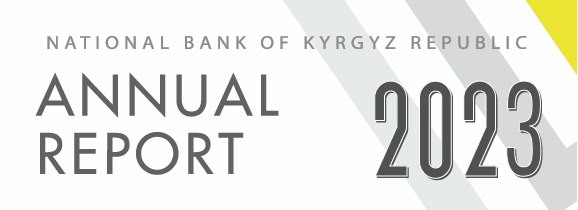Deposits
(2007)
In 2007, the deposit base of operating commercial banks continued rising, and only in October and November there was a reduction of deposits in foreign currency. In October, this reduction was mostly due to the decrease in the som equivalent of deposits in foreign currency as a result of significant appreciation of the national currency against major foreign currencies, while in November the decrease was due to the outflow of dollar deposits.
In total for the reporting period, the volume of the deposit base increased by 39.5% and amounted to 23.4 billion soms as of the end of December (without regard of OJSC Ayil Bank the deposit base increased by 32.0%, up to 22.2 billion soms). The growth rate of deposits in national currency was much higher, and their volume as of the end of the period amounted to 10.0 billion soms, a 94.6% increase (without regard of OJSC Ayil Bank the growth was 72.9%. The volume of deposits in foreign currency increased by 10.7% and amounted to 12.2 billion soms. As a result, the dollarization of deposit base reduced by 13.6 pp, making 52.1% as of the year-end (without regard of deposits in OJSC Ayil Bank the dollarization decreased by 10.6 pp, down to 55.0%).
The reporting year also saw a favorable trend of the increase in the share of personal deposits in the structure of the deposit base. Their share grew by 2.0 pp up to 26.6%.
The share of demand deposits considerably reduced in 2007 due to the advanced growth of the time deposits. Over the reporting period, this share decreased by 17.0 pp and amounted to 64.5% as of the end of the period (without regard of OJSC Ayil Bank it decreased by 13.6 pp). At the same time, the share of short-term deposits increased from 17.1% to 27.2% mostly due to an increase in deposit balances with 6 to 12 months term. The share of long-term deposits increased by 6.9 pp up to 11.7% chiefly due to the growth of balances with over 3 years term (without regard of OJSC Ayil Bank the share of long-term deposits grew by 2.1 pp up to 7.0%). As a result, the maturity of the deposit base increased by 4.1 months and amounted to 6.6 months as of the end of the reporting period, while the maturity of time deposits increased by 5.5 months and amounted to 16.9 months (without regard of OJSC Ayil Bank the growth of overall maturity was 2.0 months, and the maturity of time deposits increased by 1.4 months).
The total concentration index of the deposits market decreased by 0.02 over the reporting year, and amounted to 0.09, which is equivalent to the market presence of 11 banks with equal shares and indicates low concentration of the deposits market.
The volume of attracted deposits in the banking system in 2007 was 73.6 billion soms, which was a 2.7% decrease compared to 2006. A reduction in the flow of deposits was mostly due to the significant decrease in the inflow of personal demand deposits in foreign currency in one of the commercial banks. Without regard of the deposits in this bank the volume of attracted deposits over the reporting year amounted to 64.4 billion soms, a 15.5% increase compared to 2006. Furthermore, the inflow of deposits in national currency increased significantly, by 66.4%, and amounted to 20.9 billion soms. The volume of attracted deposits in foreign currency increased by 0.7% and amounted to 43.5 billion soms over the year.
It’s noteworthy that the volume of deposits attracted by commercial banks was continuously growing over the year until the autumn, and the inflow of deposits decreased in September and November. However, the volume of deposits attracted by commercial banks increased again in December due to a significant growth of deposits in national currency.
In the time structure of deposits the share of new demand deposits decreased by 11.2 pp, down to 78.6%. The share of short-term deposits increased by 7.9 pp over the reporting period and amounted to 15.9%, and the share of long-term deposits increased from 2.1% to 5.5%. As a result, the total maturity of new deposits over the reporting period increased from 1.1 to 2.4 months, and the maturiey of time deposits went up from 10.4 to 11.3 months.
The interest rate for new deposits in national currency on average increased by 0.3 pp and amounted to 2.2% over 2007 compared to 2006. The average rate for time deposits in national currency decreased by 0.5 pp and amounted to 6.9%. The rates decreased practically across all maturities except the rates for deposits with the term from 3 to 6 months (Diagram 5).
In the structure of deposits by banks, the average rates for time deposits in national currency decreased against the previous year in 9 banks, the rates went up in 8 banks, and remained unchanged in 2 banks.
On average over the period, the real rate for time deposits in national currency was negative 1.4%, which was a 3.8 pp decrease compared to the similar period of the previous year, mostly due to the accelerated inflation rate (year-on-year).
In the reporting period, the rate for new deposits in foreign currency went up 0.4 pp and amounted to 0.9%. The increase in the rate was due to the change in the structure of deposits flow, where the volume of time deposits with a higher rate increased in the context of reduction in the flow of demand deposits (Diagram 6). The weighted average rate for time deposits in foreign currency fluctuated significantly over the reporting period, and amounted to 5.4% on average, which is a 0.2 pp increase compared to 2006.
In the structure of deposits by banks, the average rate for new time deposits in foreign currency went down in 5 banks, the rate went up in 13 banks, and remained unchanged in one bank.

















